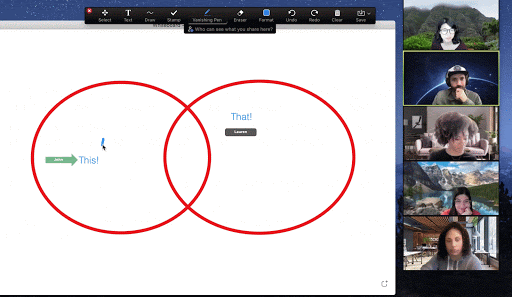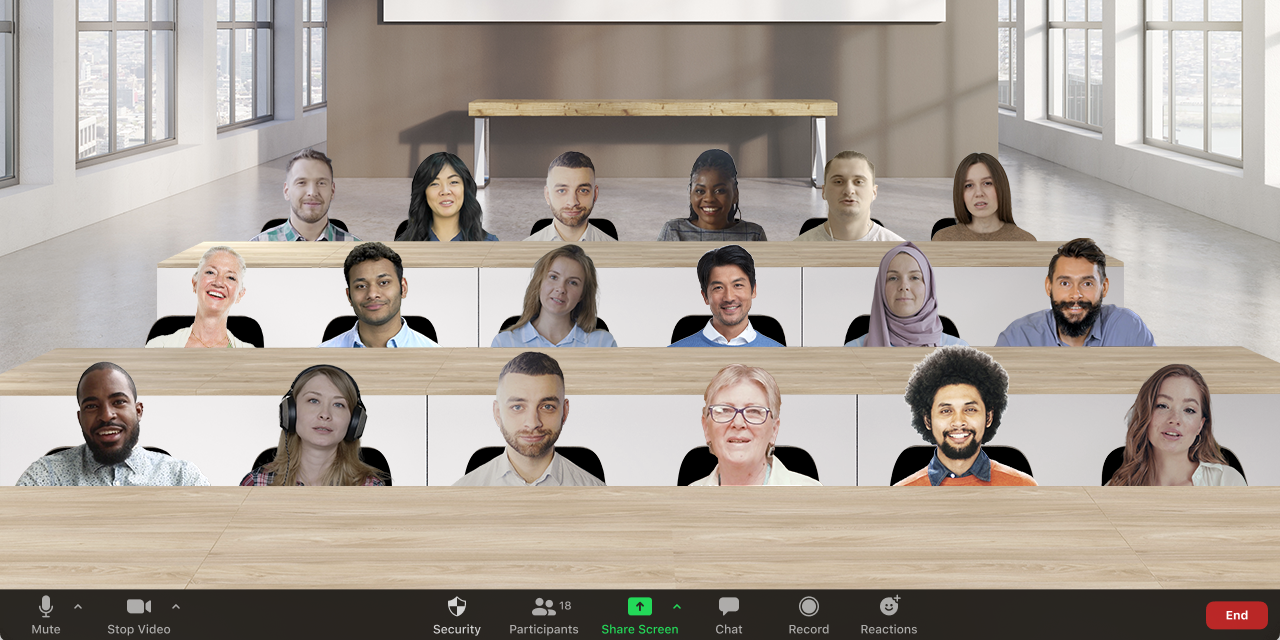Ariel Siegelman

With the start of a new semester, it’s always a good practice to check out the new features that Zoom has added over the last few months! You never know what new tools are now available that will make your online synchronous teaching more seamless–and more creative!–than ever before. Below are the CAT’s favorite new features that were added during the fall semester.
As always, you’ll want to make sure that you have the most up-to-date version of Zoom, otherwise these features may be unavailable. To do so, you can go to the Zoom program on your computer, click your profile picture in the upper right corner of the window that appears, and select “Check for Updates” from the drop-down menu.
Automatic updates
On the note of keeping Zoom up-to-date, there is now a feature that you can turn on to ensure that the Zoom program on your computer automatically stays updated. You can choose between two different update frequency settings: The “Fast” option will update Zoom every time there are new updates, which will allow you to be on the cutting edge of all of Zoom’s new features. The “Slow” option will update Zoom less frequently, which will allow you to become more comfortable with Zoom’s existing features, and Zoom will provide its new features to you at a slower pace. To apply this setting, go to the Zoom program on your computer, click your profile picture in the upper right corner, select “Settings” from the drop-down menu, and locate the “Zoom Updates” option in the window that appears.
Presentation slide control
If you use Google Slides, Powerpoint, or Keynote to present slideshows while sharing your screen, you can now turn on a setting that will allow you to give other participants in the meeting permission to control the progression of the slides. This is especially useful if you often co-present slideshows with another instructor or TA, as now all presenters will be able to progress through the slideshow instead of the person screensharing being the only one who can do so. To learn more about enabling and using this feature, visit the following Zoom support guide: Controlling slides shared by another participant.
New quiz question types for polling
Zoom has added new question types for polls! Previously, only single choice and multiple answer questions were available, but Zoom’s question types now also include matching, rank answers, fill in the blank, short and long answer questions, and rating scale. You are also now able to embed images into your poll questions, and Zoom will automatically record all responses from your participants. To learn more about these advanced polling features, visit the following Zoom support guide: Advanced polling and quizzing for meetings.
Poll editing access for alternative hosts
On the note of polling, any alternative hosts that have been assigned to a meeting can now add or edit polls. This is very useful if you would like a TA or co-instructor to manage the polls during your live class. An alternative host in a meeting will now see the additional in-meeting options to add or edit a poll, which will open the poll settings on the temple.zoom.us website to make any changes.
Two-way chat with Waiting Room participants
When you are the host of a meeting and have the Waiting Room enabled, you and any co-hosts can now exchange messages with participants in the Waiting Room! This is incredibly helpful for letting the Waiting Room participants know their estimated waiting time, to give them any information they need to prepare for your meeting, and for the participants to send you any necessary information while they’re waiting. You can send messages to all participants in the Waiting Room or just individual participants. Additionally, only the host and any co-hosts will be able to see responses from those in the Waiting Room. You can enable this feature in the Settings of your account when you log into temple.zoom.us.
Create, remove, and rename breakout rooms while they are open
In the past, if you wanted to modify any existing breakout rooms, you would have to close all of the breakout rooms in order to make any changes. Now, you no longer need to close the breakout rooms in order to rename, add, or remove rooms. You can perform these actions while breakout rooms are currently open and in use. Note that in order to do this, all of the participants in the Zoom meeting need to have the most up-to-date version of Zoom.
Schedule meetings with Focus mode
One of our favorite new features from last semester was Focus Mode! Focus Mode allows only hosts to see participants’ videos and screenshares and easily switch between different participants. Additionally, they can choose specific co-hosts and participants to also see these screenshares if they wish. This means that you can require students to be sharing their screens simultaneously while taking an exam, and you and any co-hosts can review each student’s screen, without the students seeing each other’s screens. This is also useful if a student wants to share or troubleshoot something on their computer privately with you, without sharing their screen with the entire class. Now you can schedule a meeting with Focus mode to start automatically when the meeting begins instead of having to enable it once you’re in a meeting.
Profile photos for in-meeting chat
Finally, the chat feature in Zoom meetings now displays all participants’ profile pictures next to their messages. If a participant has not uploaded a profile picture, the participant’s initials will appear instead. This will help you and your students put faces to names while interacting with the chat, further humanizing your Zoom meeting, especially if any students have their cameras off.
To learn more about how to use these features, you can visit our in-person Educational Technology Labs, our Virtual EdTech Drop-in Lab, or book a consultation with an Educational Technology Specialist. Information and links to these services are available at catbooking.temple.edu.
Have a great spring semester!
Ariel Siegelman is Manager of Learning Engagement at Harrisburg University of Science and Technology.












